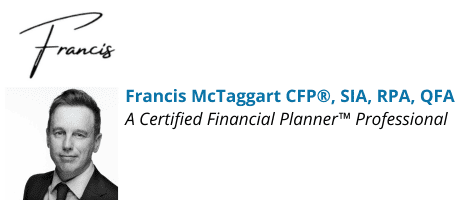Pension Retirement Options
Navigating your pension drawdown options is crucial as you approach retirement.
Recent changes in Ireland’s pension landscape have introduced new considerations for retirees.
Here’s an updated overview to help you understand your options when it comes to drawing down your pension benefits.
Accessing Your Pension Benefits
The age at which you can access your pension benefits varies depending on the type of pension plan you have:
-
Personal Pension: You can access your benefits between ages 60 and 75 without the need to stop working. Early access before 60 is possible in cases of serious illness.
-
Personal Retirement Savings Account (PRSA): Similar to personal pensions, access is available between ages 60 and 75, with no requirement to cease employment. Early access may be granted if you become seriously ill or, if you’re an employee over 50 who has ceased employment.
-
Personal Retirement Bond (PRB): Benefits can be accessed from age 50 onwards. Early access before 50 is possible in cases of serious illness.
-
Defined Contribution Occupational Pension Scheme: These schemes have a set Normal Retirement Age (NRA), typically 65 but it can vary. If you’ve left employment, you can access your previous employer’s pension from age 50 onwards, subject to trustee approval.
-
Executive Pension Plan: Similar to defined contribution schemes, with an NRA usually around 65. If you own more than 20% of your company’s shares and wish to retire before age 60, you must dispose of those shares.

Options at Retirement
Upon reaching retirement, you have several options for your pension funds:
-
Tax-Free Lump Sum: You can withdraw a portion of your pension as a lump sum, with the first €200,000 of your lump sum being tax-free. Amounts between €200,000 and €500,000 are taxed at 20%. Your lump sum calculation can differ depending on your actual pension arrangement but the most common calculation is 25% of your fund value.
-
Annuity Purchase: Use your remaining funds to buy an annuity, providing a guaranteed income for life. The income amount depends on factors like prevailing interest rates and your age.
-
Approved Retirement Fund (ARF): Invest your remaining funds in an ARF, allowing for flexible withdrawals.
Recent Changes
Several changes have been implemented to Ireland’s pension system:
-
State Pension (Contributory) Increase: The maximum personal rate has increased by €12 per week, bringing it to €289.30 per week.
-
Introduction of Auto-Enrolment: Expected to start in September 2025, the “My Future Fund” auto-enrolment scheme will commence. Employees aged 23 to 65 earning over €20,000 annually will be automatically enrolled, with contributions starting at 1.5% of gross pay, increasing to 6% over ten years. Employers will match these contributions, and the government will provide additional support.
-
Employer Contribution Limits to PRSAs: Employers are now limited to contributing a maximum of 100% of an employee’s or director’s salary to a PRSA.
-
Flexible State Pension Drawdown: The option to defer claiming the State Pension has been introduced, allowing for higher pension payments upon delayed retirement.
Pension Drawdown Frequently Asked Questions (FAQ)

When can I access my pension?
- Personal Pension & PRSA: Age 60-75 (earlier in cases of serious illness).
- PRB: From age 50 (earlier if seriously ill).
- Occupational & Executive Pensions: Typically age 65, but can be accessed from 50 if you’ve left employment and trustees approve.
What is the maximum tax-free lump sum I can take?
- First €200,000 of your lump sum is tax-free.
- The next €300,000 taxed at 20%.
*dependent on lump sum calculation
What’s the difference between an Annuity and an ARF?
- Annuity: Guaranteed income for life but may be lower due to interest rates.
- ARF: More flexible, allows investment growth, but withdrawals must be managed carefully.
Can I keep working while drawing my pension?
- Yes! You don’t have to stop working when you start accessing your pension.
What happens if I pass away after retiring?
- If you have an Annuity, payments stop unless you chose a spouse’s pension or guaranteed period.
- If you have an ARF, the remaining balance can be inherited.
How do recent pension changes affect me?
- Auto-enrolment expected to start in September 2025 for workers earning over €20,000 per year.
- Employers can now contribute up to 100% of salary into a PRSA.
- You can defer the State Pension for higher payments later.
Pension Drawdown Checklist
✅ 1. Check Your Pension Type
- Personal Pension / PRSA / PRB / Occupational Scheme / Executive Pension Plan?
✅ 2. Confirm Your Access Age
- Are you 50+ (for some pensions) or 60+ (for most personal pensions)?
✅ 3. Decide on Your Lump Sum
- Take 25% tax-free or use the salary & service method (if applicable)?
✅ 4. Choose Your Post-Retirement Option
- Annuity (guaranteed income for life)
- ARF (investment-based, flexible withdrawals)
✅ 5. Review Tax Implications
- Ensure lump sum taxation doesn’t impact your income strategy.
✅ 6. Plan for Your Beneficiaries
- Consider what happens to your pension upon death.
Why Planning Ahead Matters
There are many variables at play when it comes to your pension drawdown options. Before making any decisions, you should always seek professional advice. I recommend reviewing your retirement options at least three years in advance.
Too often, potential clients come to me at retirement and receive a nasty surprise—they don’t get what they were expecting.
This can be avoided with a bit of forward planning.

Get in Touch
Drop us an email at info@fortitudefp.ie or request a callback.
Visit our Insights – A hub of information covering saving, investing, financial planning, protection, and pension advice.


Our blog posts are intended for information purposes only and should not be interpreted as financial advice.
You should always engage the services of a fully qualified financial planner before entering any financial contract.
To discuss engaging the services of Fortitude Financial Planning please email us at info@fortitudefp.ie.
Fortitude Financial Planning Ltd will not be held responsible for any actions taken as a result of reading these blog posts.


 Production
Production